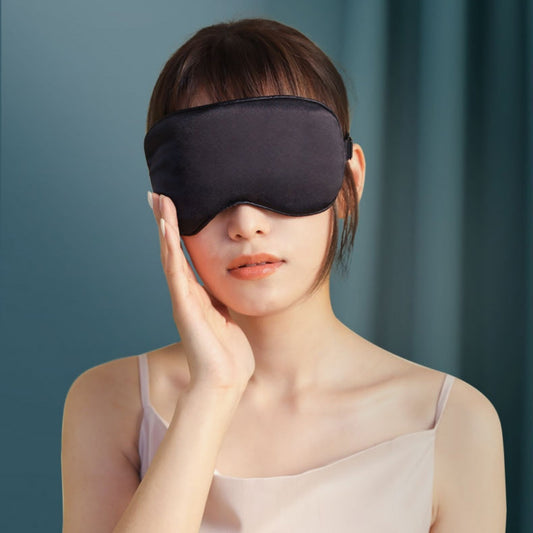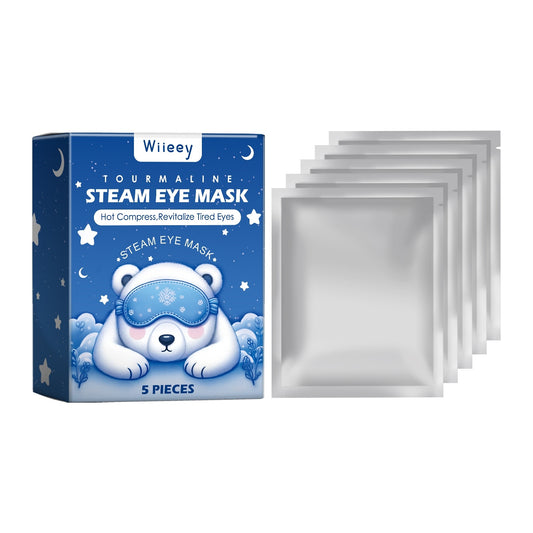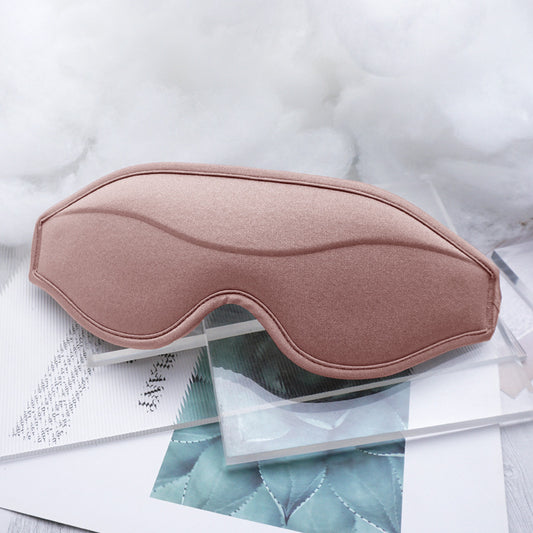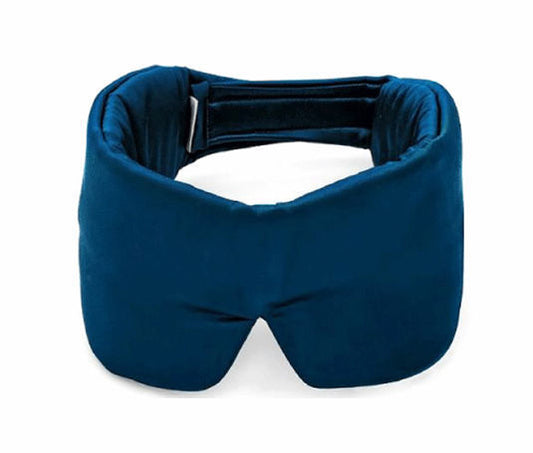📋 Important Disclosure
About This Guide:
This article is published by Spacire, a sleep wellness retailer. All featured products are sold by us, and we earn revenue from purchases. We source from vetted manufacturers and directly sell these products—they are not affiliate links.
Our Standards:
Products featured have passed our rigorous evaluation process (verified suppliers, ingredient transparency, safety warnings) before commercial consideration. Dr. Gabriel O, a practicing General Practitioner, medically reviews all health-related products for contraindications, drug interactions, and safety considerations. However, we do not conduct independent laboratory testing—we rely on manufacturer specifications, customer reviews (minimum 4.0★), and third-party testing when available.
Medical Review:
This content has been medically reviewed by Dr. Gabriel O (General Practitioner) for accuracy and safety guidance.
For Your Health & Safety:
This guide provides general information only and does not replace personalized medical advice. Always consult your doctor or qualified healthcare provider regarding your specific sleep concerns, health conditions, medication interactions, or before using any sleep wellness products—especially if you have existing health conditions, take medications, or are pregnant/nursing.
Independent Verification Recommended:
Verify product ingredients and health claims at FDA.gov, check safety certifications at CPSC.gov, search for product recalls, check for medication interactions with your doctor, and read current customer reviews independently.
Choosing the right weighted blanket weight is crucial for maximizing comfort, safety, and therapeutic benefits. Too light and you won't experience the calming deep pressure stimulation. Too heavy and you risk discomfort or restricted movement. Creating an optimal sleep environment involves more than just choosing the right blanket weight—combining your weighted blanket with effective sound masking solutions addresses both tactile and auditory sleep disruptions for truly restorative rest.
The standard recommendation is 10% of your body weight, but this guideline varies based on personal preference, sleeping position, and individual sensory needs.
Key Takeaways
- Standard formula: Choose a weighted blanket that's approximately 10% of your body weight, with flexibility to adjust 5-7% based on comfort preferences
- Personal factors: Consider sleeping position, sensory sensitivities, and whether you're sharing the blanket when selecting weight
- Safety first: Never use weighted blankets for children under 2 years or individuals who cannot remove them independently
- Try before committing: Many users start with lighter weights and gradually increase to find their optimal comfort level
- Material matters: Glass beads, steel beads, and plastic pellets all affect how weight distributes across your body
Weighted Blanket Weight Calculator
Use our simple calculator to find your ideal weighted blanket weight based on your body weight and preferences.
Calculate Your Perfect Weighted Blanket Weight
Your Recommended Weight:
Understanding the 10% Rule
The 10% guideline comes from clinical research on deep pressure stimulation therapy.[1] This weight provides enough pressure to stimulate mechanoreceptors in your skin and muscles, triggering the release of serotonin and dopamine while reducing cortisol levels.
However, this isn't a rigid rule. Studies show that comfort ranges typically fall between 7-15% of body weight depending on individual factors.[2]
Weight Selection Process
Calculate Base Weight
Start by calculating 10% of your body weight. A 150-pound person would begin with a 15-pound blanket.
Consider Personal Factors
Adjust based on sleeping position, sensory preferences, and whether you sleep hot or cold. Side sleepers often prefer lighter weights, while back sleepers may enjoy more pressure.
Account for Sharing
If sharing a blanket, calculate based on the lighter partner's weight or consider individual blankets. Our weighted blanket collection offers multiple weight options for couples.
Test and Adjust
Many users start lighter and gradually increase weight. You can always exchange for a different weight if needed within the return period.
Weight Guidelines by Body Weight
Use this comprehensive table to quickly identify your recommended weighted blanket weight range based on your current body weight.
| Body Weight Range | Recommended Blanket Weight (10%) | Comfort Range (7-15%) | Best For |
|---|---|---|---|
| 40-70 lbs | 5 lbs | 3-7 lbs | Children (with supervision) |
| 70-100 lbs | 8-10 lbs | 5-12 lbs | Teens, petite adults |
| 100-150 lbs | 10-15 lbs | 7-20 lbs | Average adults |
| 150-200 lbs | 15-20 lbs | 12-25 lbs | Most adults |
| 200-250 lbs | 20-25 lbs | 15-30 lbs | Larger adults |
| 250+ lbs | 25-30 lbs | 20-35 lbs | Heavy users, deep pressure seekers |
Factors Affecting Weight Selection
Sleeping Position
Back sleepers tolerate heavier weights better than side or stomach sleepers, who may prefer 5-7% lighter for easier movement.
Temperature Sensitivity
Hot sleepers should choose breathable materials and potentially lighter weights. For warm weather solutions, explore cooling weighted blanket options that maintain therapeutic benefits without overheating.
Sensory Preferences
Individuals with sensory processing disorders or anxiety may benefit from heavier weights (12-15%) for maximum calming effect.[3]
First-Time Users
If new to weighted blankets, start at 8-10% of body weight. You can always increase later as you adapt to the sensation.
Safety Guidelines for Weighted Blanket Weight
Weighted blankets are generally safe when used correctly, but certain populations require special consideration.[4] Understanding age-appropriate weight selection is particularly important—learn more about special considerations for older adults to ensure both safety and therapeutic effectiveness.
⚠️ Children Under 2
Never use weighted blankets for infants or toddlers under 2 years old due to suffocation risk. For children 2+, always supervise and ensure they can remove the blanket themselves.
💪 Physical Limitations
Anyone with limited mobility, respiratory conditions, or circulatory issues should consult a healthcare provider before using weighted blankets.
🛑 Maximum Weight Limit
Avoid blankets exceeding 15% of your body weight. Excessive weight can restrict breathing, circulation, and emergency removal.
🏥 Medical Conditions
Individuals with sleep apnea, asthma, claustrophobia, or COPD should seek medical clearance before using weighted blankets.
Weighted Blanket Recommendations by Weight Class
Light Weight Options (5-10 lbs)
Perfect for children, petite adults, or those new to weighted blankets. These lighter options provide gentle pressure without overwhelming sensory input.

BlissLoom Weighted Blanket
Cozy stress relief blanket available in Light gray, Navy, and Dark grey. Multiple weight options from 5 lbs (91×122cm) to heavier selections.

BlissLoom Comfort Series
Soft, breathable fabric with even pressure distribution. Ideal for year-round use with gentle, comforting weight (10 lbs - 122×183cm/198cm).
Medium Weight Options (12-17 lbs)
The most popular weight range for adults weighing 120-170 pounds. These provide balanced pressure suitable for most sleeping positions.

BlissLoom Standard Weight
Premium 15 lbs weighted blanket (122×183cm/198cm) with deep pressure therapy for anxiety relief and improved sleep quality.

BlissLoom Premium 15 lbs
Dark grey luxury weighted blanket with 15 lbs pressure (152×203cm). Perfect for adults seeking deeper relaxation and therapeutic benefits.

BlissLoom Enhanced Pressure
17 lbs weighted blanket (152×203cm) offering maximum therapeutic pressure for stress relief and sensory comfort.
Heavy Weight Options (20+ lbs)
Designed for larger adults or those seeking maximum deep pressure stimulation. These heavier blankets provide intensive therapeutic benefits for anxiety and sensory needs.

BlissLoom Heavy Duty 20 lbs
Maximum pressure 20 lbs weighted blanket (152×203cm) for adults over 200 lbs. Ultimate stress relief and deep sleep support.

AiryNap Multi-Functional
Thickened noise-reduction blanket with multi-layered comfort. Perfect for sensory comfort and relaxation with added sound-muffling benefits.
Choosing Between Weight Options
Still unsure which weight to choose? Consider these practical scenarios and understand the broader context by comparing how weighted blankets differ from traditional bedding in delivering therapeutic benefits:
Choose lighter (7-8%): If you're a side or stomach sleeper, run hot at night, have respiratory concerns, or are trying weighted blankets for the first time.
Choose standard (10%): If you're an average-weight back sleeper with normal temperature regulation and no medical conditions. This works for 80% of users.[5]
Choose heavier (12-15%): If you're seeking maximum anxiety relief, have autism or sensory processing needs, sleep on your back exclusively, or have used weighted blankets before and want more pressure. For trauma-related anxiety and hyperarousal, explore specialized therapeutic applications that may benefit from heavier weights under medical supervision.
What If I Choose the Wrong Weight?
Don't worry—weight preference often requires trial and adjustment. Many users discover their ideal weight after testing different options.
Signs your weighted blanket is too heavy:
- Difficulty moving or turning over during sleep
- Feeling trapped or claustrophobic under the blanket
- Shortness of breath or chest pressure
- Morning muscle soreness or fatigue
- Increased anxiety rather than reduced stress
Signs your weighted blanket is too light:
- No noticeable calming or grounding effect
- Feels similar to a regular blanket
- Insufficient pressure for anxiety relief
- Continues moving during sleep without staying in place
Most retailers offer return or exchange policies. Check our full weighted blanket selection to find the perfect weight for your needs.
Additional Considerations Beyond Weight
Blanket size matters: A weighted blanket should cover your body without hanging over bed edges. Excess overhang concentrates weight unevenly. For couples, consider two individual blankets rather than one shared king-size option.
Fill material affects feel: Glass beads are quieter and more evenly distributed than plastic pellets. Steel beads are denser, allowing thinner blankets. For comprehensive guidance on materials, sizes, and construction quality, see our complete weighted blanket guide.
Fabric choice impacts temperature: Cotton breathes better for hot sleepers, while minky provides warmth. Some blankets feature dual-sided fabrics for year-round versatility.
Maintenance requirements: Heavier blankets (20+ lbs) may be difficult to wash at home. Consider removable duvet covers for easier cleaning.
Complementary Sleep Products
Maximize your sleep quality by pairing your weighted blanket with other proven sleep aids. Understanding which sound therapy approach matches your sleep patterns helps create a comprehensive sensory environment that addresses both tactile and auditory needs:
- Sleep masks for complete darkness and melatonin production
- Lavender pillow sprays for aromatherapy-enhanced relaxation
- White noise machines to mask disruptive environmental sounds—proper placement in your bedroom ensures optimal noise masking without creating auditory distractions
- Blackout curtains for optimal sleep environment control
- Exploring whether different sound frequencies like pink noise or brown noise complement your weighted blanket better than traditional white noise for deeper relaxation
Explore our complete sleep wellness essentials collection for more therapeutic sleep solutions available worldwide including Australia, Canada, United Kingdom, United States, Germany, France, Netherlands, Spain, Italy, Sweden, Japan, Brazil, India, United Arab Emirates, etc.
Final Thoughts on Weighted Blanket Weight
Selecting the right weighted blanket weight requires balancing scientific guidelines with personal comfort preferences. Start with the 10% rule as your baseline, then adjust based on sleeping position, sensory needs, and individual tolerance.
Remember that the "perfect" weight varies significantly between individuals—what feels comforting to one person may feel restrictive to another. The therapeutic benefits of deep pressure stimulation only work when the weight feels natural and soothing rather than burdensome.
Take time to assess your needs using our calculator, consider the factors outlined in this guide, and don't hesitate to exchange weights if needed. Quality sleep is worth the investment in finding your ideal match.
References
- Eron, K., et al. (2020). "Weighted Blanket Use: A Systematic Review of the Evidence." American Journal of Occupational Therapy, 74(2), 7402205010. https://ajot.aota.org ↑
- Ackerley, R., et al. (2015). "Touch perceptions across skin sites: Differences between sensitivity, direction discrimination and pleasantness." Frontiers in Behavioral Neuroscience, 9, Article 54. https://www.frontiersin.org ↑
- Champagne, T., & Mullen, B. (2018). "Evaluating the Safety and Effectiveness of the Weighted Blanket with Adults During Inpatient Mental Health Treatment." Occupational Therapy in Mental Health, 34(3), 211-222. https://www.tandfonline.com ↑
- American Academy of Pediatrics. (2022). "Safe Sleep Recommendations." Pediatrics, 150(1), e2022057990. https://publications.aap.org ↑
- Baumgartner, J. N., et al. (2022). "Weighted Blankets and Sleep Quality in Adults with Insomnia." Journal of Sleep Research, 31(4), e13532. https://onlinelibrary.wiley.com ↑












